The Guytons: Offspring remember life with legendary parents
EDITOR’S NOTE: This article was originally published in the Summer 2018 edition of Mississippi Medicine, the medical alumni magazine.
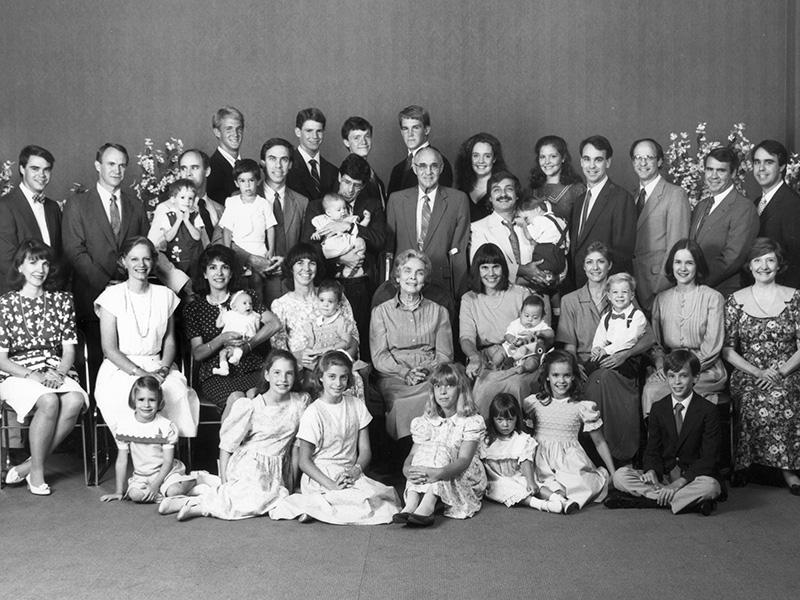
You can’t prowl the corridors, classrooms or clinics of UMMC for long without hearing or seeing the name of the late Dr. Arthur C. Guyton, physicist, teacher, physician, inventor and father. It would be like touring the National Mall and missing the Washington Monument.
The chair of physiology at the old two-year medical school in Oxford and, then, the four-year school in Jackson has been linked by name to the term “giant” for so long, the strength of the compliment may seem diluted by repetition and time.
Not so for the people who knew him. For them, he is still more than a label on a towering building – the Arthur C. Guyton Research Center; or a credit line on the best-selling book of its kind – The Textbook of Medical Physiology; or a name that cannot go unsaid in any discussion of blood pressure – the kidneys, he discovered, are crucial.

For them, he was among the most devoted teachers they ever had, a mentor, an exemplar for how life should be lived – the Navy veteran’s spirit unconquered by his battle with polio. He was, and is, all that and more as well to a group of 10 distinguished physicians who are his children.
In the dedication to his famous textbook, Arthur Guyton praised the people who meant most to him, including Ruth Weigle Guyton, whose influence on their family’s life was as great as his:
To:
My father for the uncompromising principles that guided his life
My mother for leading her children into intellectual pursuits
My wife for her magnificent devotion to her family
My children for making everything worthwhile
What was it like for those children to grow up under the care of Arthur and Ruth Guyton? Here are the memories of some of them: Dr. Jean Gispen, Dr. David Guyton and Dr. John Guyton. Those three, as do all the Guyton children, bear out their father’s words.
BEGINNING AT THE END

It happened when Dr. Jean Guyton Gispen was in Oxford at the Ole Miss pool, swimming.
“I got home and my husband said, ‘There’s been an accident.’ We got in the car and drove to Jackson,” she said. “We got to the hospital. It was not good.”
Dr. David Guyton was hundreds of miles away in Baltimore, adjusting the alignment of a patient’s eyes. “I got this phone call on the patient floor,” he said. “It was Kees
“It was one of those things where you remember where you were when you heard the news. My mother did hang on for six days or so, but when she became alert enough to find out Daddy hadn’t made it, she gave up.”

The wreck had happened on U.S. 49 near Pocahontas, on April 3, 2003, a Thursday. Arthur Guyton liked to eat quail at the Catfish Haven in Pocahontas, always on Thursdays. His wife, Ruth Guyton, had been driving the minivan, tapping the pedal to move it from a side road onto the highway. She didn’t notice the other car.
“I didn’t swim again for a long time,” Jean Gispen said. “And I used to sing when I prepared supper.” Not for three more years would she sing again in the kitchen.
For his part, Dr. John Guyton describes that day as if his parents had simply gone somewhere else.
“They went for a drive one day,” he said, “and didn’t come home.”
To rephrase a line from a famous autobiography: They lived in the house their father built. Which isn’t the whole truth. In Jackson, they lived in the house that they and their father built. They also had some help.
Made of steel rebar and poured concrete, the broad-shouldered building, they believed, was strong enough to survive the mother of all disasters. Robert Guyton wrote a short story in high school about the family living through an H-bomb holocaust by fleeing to a crawl space beneath it. That’s where the family kept canned goods and jugs of water next to the furnace, during 1962’s Cuban Missile Crisis.
Before that, while in Oxford, they watched a TV set their father built. It was a picture tube with no cabinet. They watched “Howdy Doody” and Sid Caesar.
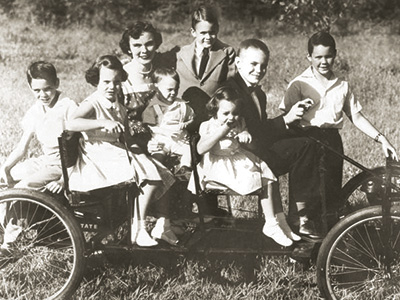
Ruth Guyton, third from left, and her seven oldest children enjoy an outing in their electric car.
They rode in an electric car they helped their father build – until someone stole it. The door-less, roofless frame was welded steel pipe; the two seats, wooden benches; the four tires, bicycle wheels. Powered by car batteries, it transported the underage drivers around the streets in an otherwise quiet neighborhood.
While they were mechanically inclined, and mostly precociously so, there was a lapse that nearly caused their mother’s electrocution.
Memories about the mishap vary, but it seems that the TV antenna had fallen from the roof to the yard, where, days later, it somehow brushed against Ruth Guyton as she worked in her garden, shocking her with 110 volts, dropping to the ground, unconscious.
Inside the house, Steven unplugged the TV, probably saving Ruth’s life. Later, lying on a sofa, where some men who happened to be nearby had taken her, she recovered fairly quickly. It took David a bit longer.
“It was my repair job in the TV that caused it,” he said. “I used too much solder. It had shorted out the power line to a metal casing, electrifying the TV and the antenna.
“I could have killed her.” Ruth Guyton came away with a big pink scar at the base of her neck, and David came
HOME IS WHERE THE ARC WELDER IS
The backyard in Oxford where the first five children played was small, dusty and grass-deprived. In Jackson, where the family moved once Arthur Guyton relocated with the medical faculty to the new Medical Center, the children played on a much lusher lawn at their concrete home on Meadow Road.
Keeping the grass trimmed, for a while, were some carbon-based lawnmowers that emitted the occasional “baa.”
“We had no business having sheep,” Gispen said. “They were in a pasture on the side of the house close to the Hanging Moss swim club. My dad and the older boys had planted all the pine trees by this time. There was not a lot of grazing room.”
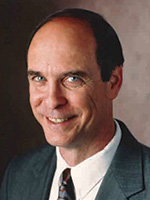
The family had several sheep and a cow. “They all died,” John Guyton said.
Among their dad’s economizing measures, the sheep-cow experiment was one of the few that didn’t quite work out.
Another one involved ancient anesthetics. “When we would hurt ourselves, we would be directed to lie on top of the deep freezer in the kitchen and Daddy would sew us up with these big, rope-type sutures,” David Guyton said. “Monstrous stuff – 4-0 silk.
“He had saved a bunch of penicillin tablets and vials of local anesthetic – procaine – from World War II. He boiled his old glass syringes and injected us with procaine. He thought it was still potent; it wasn’t, as we on the receiving end knew full well.”
Finally, Tommy, the next-youngest, gave Greg, the youngest, some advice, David Guyton recalled: “‘If you ever hurt yourself, don’t go home!’”
For Arthur and Ruth Guyton, always in the back, or maybe the front, of their minds was the need to save enough money to help put a football team, minus one, through college and beyond.
“We were very much taught that if something was broken, you did not go out and buy a new one; you would fix it,” Gispen said. “It didn’t have to be pretty, it just had to be functional. Even today, I will mend clothes, even when they’re old.”
As an adult, David Guyton discovered just how much his father’s thrift and self-reliance had rubbed off on him when he decided to excise a mole above his eyebrow. “The scalpel went the wrong way in the bathroom mirror,” he said, “and I soon excised half my face.”
If the anesthetics, and eventually the sheep, didn’t work so well, the children did, sometimes for fun. Greg Guyton built a ham radio. David Guyton

“My father bought this electric arc welder and he taught me how to weld. He hadn’t welded before either. We learned together.”
They built the electric car in Oxford – a five-seater, the one stolen after the move to Jackson – and, sometime later, Steven built a homemade go-kart.
David and Robert were in high school when they built their 24- and 25-foot sailboats, respectively. Some, or all, of
“You built a wall up about 18 inches at a time,” John Guyton said. “Daddy had these metal forms he made with a kind of C-clamp. The concrete would set for a day, then you would remove the form the next day, hoist it up, and clamp it on top of the wall that had set. Then build up on top of that.
“Daddy once pointed out that William Faulkner (“Mr. Bill”) had done him one better: He had a concrete boat.” Yes, his dad knew William Faulkner.
Arthur Guyton’s parents were Dr. Billy S. Guyton, an EENT physician and dean of the original medical school in Oxford, and Kate Smallwood Guyton, a teacher who had been a missionary in China. Nicknamed “Ott,” Arthur grew up watching his father in the clinic, playing chess and trading tales with the Nobel Prize-winning author whose own concrete boat, after a big storm on Sardis Lake, was never seen again.
By contrast, the Guytons’ projects, for the most part, did not merely endure; they prevailed, as Ott’s writer-friend might have said. “We felt like concrete ran in our blood,” said David Guyton who thrives in his own 1,400-square foot machine shop down in his basement in Baltimore, taking up his father’s legacy as an inventor. “I love it down there; I have the best machine shop of all the kids – their spouses are just not as tolerant as mine.”
It took a few years to finish the six-bedroom house of concrete. On opposite ends were a large workshop and a family room. It cost about $40,000, David Guyton said. The swimming pool and tennis court came later. The children, if old enough, helped build those, too.
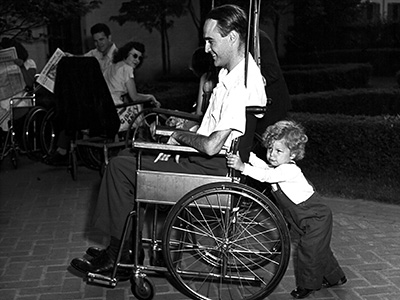
“We were Daddy’s arms and legs, guided by his brain,” David Guyton said. “That’s the best situation we could have been in, but we didn’t realize it at the time.” The situation was this: In 1946, polio struck Arthur Guyton, possibly from the drinking water at his in-laws’ summer house in New Hampshire, which came from a clear lake.
His left shoulder was mostly paralyzed; he couldn’t raise either arm at the shoulder, had no movement in the right leg from the hip down and was weak everywhere else. He took little of this lying, or sitting, down. Instead, he invented and used self-assisting contraptions, including an electric wheelchair, for which he received a Presidential Citation and a patent he sold to a wheelchair company for only $1,000, not wanting to get rich off polio.
He walked without the
HE CAME OUT ALRIGHT ANYWAY
It may sound as if the family’s motto was “I am Guyton, therefore I work.” It wasn’t like that, not all the time, Gispen said.
The family stuffed a station wagon on trips to New Hampshire to see their grandparents. They played with a string of pet dogs, including Fang, Son of Fang and Mutnik – an ironic tribute to a Russian satellite.
As a boy, David Guyton plied his first-ever optical instrument, a magnifying glass, to burn leaves. He would become an ophthalmologist.
“We were encouraged to be kids,” Jean Gispen said. “I would spend time lying in the grass just watching the clouds. When it rained, I put on a raincoat and boots and played in it. That’s the way I raised my kids, too.
“I can remember one time when I was in Jackson and our first daughter was a baby,” said Gispen, whose husband Kees Gispen is the retired executive director of the Croft Institute for International Studies at Ole Miss. “My mom stopped everything in the middle of the day, just sat on the floor and played with the baby. That certainly affected what kind of mother I wanted to be.”
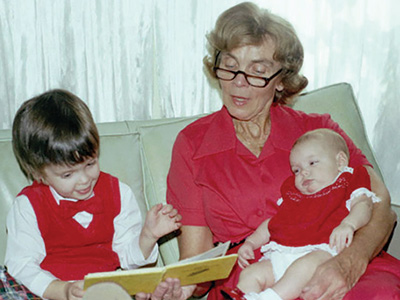
If the books children grow up on influence what they’ll do as adults, then mamas who want their babies to grow up to be doctors should stock up on Dr. Seuss, Winnie the Pooh,” and “The Rocket Book,” to name a few.
As their father worked on his textbook in the evening, for about an hour starting at 8, Ruth read to the children. Supper time, as the kids grew older, was often less “fractured,” as David Guyton described it.
“Our major meal was the school lunch,” Gispen said. “Supper would often
Whenever they did amass for a meal, the talk around the table was less about circulatory systems and such, and more about how to make go-karts go, sailboats sail and tractors gain traction.
Whatever they did together, at work or play or supper, they learned the value of collaboration – but did not always use their powers for good.
“One time, Greg, who was about 3 at the time, got too close to one of the boys when he was spraying deodorant. It got in Greg’s hair and he was told it would fall out if he didn’t soak his head in the toilet for 30 minutes,” David Guyton said.
“So he did and when he asked if that was enough, he was told, ‘No; do it again for 20 more minutes.’” Perhaps it’s fortunate that none of the
IT’S ALWAYS SPRING IN GEORGIA
This is what the 10 did become: internist/rheumatologist (one); internist/endocrinologist (one); ophthalmologist (one); anesthesiologist (two); general internist (one); orthopaedic surgeon (two); cardiothoracic surgeon (two).
All eight brothers earned their medical degrees at Harvard. Cathy Guyton Greenberger graduated from Harvard with a Ph.D., and Gispen was an undergraduate at Radcliffe College, which later merged with Harvard.
The reason they all decided to study medicine, to cure or mitigate illness, had much, or little, to do with their father’s disease; opinions vary.
“I think it had nothing to do with polio; it was the force of his personality,” Gispen said. “And it was the way he practiced medicine: He wrote books, he traveled all over the world, he was home every day by 5. He was respected. He did research. When you look at medicine that way, what’s not to like about it?
“We all found that the practice of medicine, both academic and private practice, is very different from that. It’s lucky we all liked what we were doing.”
Polio “had everything to do with it,” David Guyton said. “We had so much respect for him, for thriving in spite of all that adversity; that we wanted to be like him. Later on, we realized how much it must have hurt him.” Arthur Guyton loved the
“So he lived it through us.”
Arthur Guyton spent part of that life, initially, at Warm Springs, Georgia, where polio patients took the therapeutic waters in the years before a cure was discovered. It was the site of a family reunion. John Guyton visited the town a couple of times, before and after his parents’ deaths.
“It was almost like a spiritual experience,” he said, “thinking about all the patients who had been there, about the hopes and dreams of all the people who had polio. Part of the Warm Springs experience was the idea that ‘you can still go out and do a lot of good in the world.”
He liked to think about that, he said, and the time his
PREVAILING
The deodorant incident aside, long before the children left home to build careers, gadgets
“What has helped me as a physician, more than the fact that there were 10 of us kids, was watching my mom and dad,” Gispen said.
“You learned from them to treat high-born and low-born the same. That you are kind to people. That you respect each person for the talents each has. That if you need help, you are not ashamed to ask for it, whether you ask it of the gardener or the chancellor of the university.
“What I learned from them the most came by watching the way they treated people.”
Ruth was very religious, Gispen said. Arthur, less so. “But he was very moral, very ethical, one of the most upright men I knew. Among us kids, some are religious, some are not. But we’ve all tried to behave ethically.”
About 20 years ago, David Guyton felt a tingling in his arm, believing it portended neurosurgery. It did not, he found out, but “I was feeling very mortal for the first time,” he said.
“So I sat down and wrote my parents a letter, thanking them for raising me. I wanted to get that letter to them in case anything else happened. My mother said she never appreciated a letter so much.
“Some months ago, my brother Robert sent me a letter thanking me for helping him build his sailboat. I said, ‘Robert, are you feeling mortal all of a sudden?’” He was.
Speaking of pain and forfeiture and loss, the home on Meadow Road is bereft of
“It’s sad,” David Guyton said. “We built so much of it.”
Even so, the house of Guyton still stands – in every sense of that word – and will for a very long time.

CURRICULA VITAE - ABRIDGED
Dr. David L. Guyton – M.D., Harvard ’69; Krieger Professor of Pediatric Ophthalmology, The Johns Hopkins University School of Medicine, Baltimore, Maryland
Dr. Robert A. Guyton – M.D., Harvard ’71; Distinguished Charles Ross Hatcher Jr. Professor of Surgery, chief of the Cardiothoracic Division, Emory University, Atlanta Georgia
Dr. John R. Guyton – M.D., Harvard ’73; endocrinologist and internist, professor of medicine, Duke University School of Medicine, Durham, North Carolina
Dr. Steven W. Guyton – M.D., Harvard ’75; cardiothoracic surgeon, Seattle, Washington
Dr. Jean Guyton Gispen – M.D., Duke University ’79; rheumatologist and internist, employee health physician, University of Mississippi Employee Health Service, Oxford
Dr. Douglas C. Guyton – M.D., Harvard ’81; anesthesiologist, Raleigh, North Carolina
Dr. Catherine Guyton Greenberger – M.D., University of Miami, ’82; retired internist, Sewickley, Pennsylvania
Dr. James L. Guyton – M.D., Harvard ’85; associate professor,
Dr. Thomas S. Guyton – M.D., Harvard ’87; anesthesiologist, Medical Anesthesia Group P.A., Memphis, Tennessee
Dr. Gregory P. Guyton – M.D., Harvard ’93; orthopedic surgeon, Baltimore, Maryland, affiliated with MedStar Union Memorial Hospital


